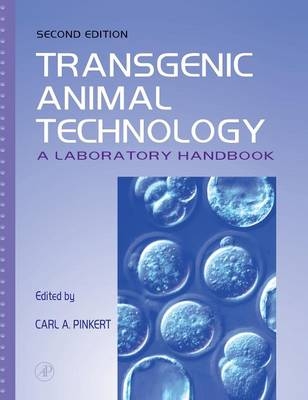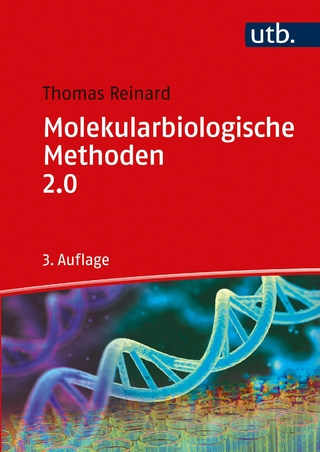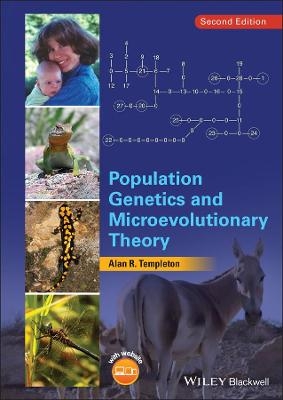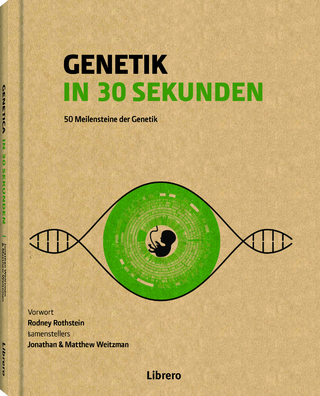
Transgenic Animal Technology
Academic Press Inc (Verlag)
978-0-12-557166-1 (ISBN)
- Titel erscheint in neuer Auflage
- Artikel merken
A transgenic animal is one that is genetically modified to carry genes from another species. Transgenic species can be raised to carry potentially useful genes from a variety of species. While the topics of genetic engineering and cloning are controversial, the reality is that these technologies offer tremendous benefits to society - from offering a framework for developing and screening medical therapies, to enhancing the safety and nutrition of the food we eat.
One potential application of research into transgenic animal technology is the creation of domestic animals genetically designed to express a certain human disease and therefore serve as models for the study and treatment of human illnesses. Although many mouse models of human diseases are available today, such models in large domestic animals physiologically more similar to humans are sparse and critically needed. Further research in this field will undoubtedly uncover many more direct and indirect benefits of this technology.
Transgenic animal technologies and the ability to introduce functional genes into animals have revolutionized our ability to address complex biomedical and biological questions. This well-illustrated handbook covers the technical aspects of gene transfer — from molecular methods to whole animal considerations — for important laboratory and domestic animal species. It describes methodologies as employed by leading laboratories and is a key resource for researchers, as well as a tool for training technicians and students. This second edition incorporates updates on a variety of genetic engineering technologies ranging from microinjection and ES cell transfer to nuclear transfer in a broad range of animal modeling systems.
Dr. Pinkert joined the University of Alabama (UA) in 2013 where he serves as Vice President for Research and Economic Development, and where he is a tenured Professor in the Department of Biological Sciences in the College of Arts and Sciences. He earned his Ph.D. from the University of Georgia and was a postdoctoral fellow at the University of Pennsylvania. For over 30 years, his research revolved around animal modeling and transgenesis. He has published extensively on transgenic modeling, reproductive biology, and embryology of laboratory and domestic animals. His laboratory developed a number of enabling technologies for the genetic engineering of both nuclear and mitochondrial genomes, as well as mitochondrial modeling strategies to address human developmental and metabolic diseases.He served as an editor of Transgenic Research on the editorial boards of five others. His research was funded by NIH, USDA, NSF, private foundations and industry. He was a Sigma Xi national lecturer from 1993-1995 and a recipient of the 1997 Doerenkamp-Zbinden Foundation Research Prize (awarded for biomedical research that significantly impacts on the welfare and well-being of animals used in research). He was elected a fellow of the American Association for the Advancement of Science (AAAS) in 2011.
Section One
Overview.
Introduction to transgenic animals.
Section Two
Transgenic animal production focusing on the mouse model.
Transgenic animal production using DNA microinjection.
Factors affecting transgenic animal production.
Gene targeting in embryonic stem cells I: History and methodology.
Gene targeting in embryonic stem cells II. Conditional technologies.
Retrovirus-mediated gene transfer.
Nuclear transfer technologies.
Section Three
Production of transgenic laboratory and domestic animal species.
Production of transgenic rats.
Production of transgenic rabbits.
Production of transgenic fish.
Production of transgenic poultry.
Production of transgenic swine by DNA Microinjection.
Production of transgenic ruminants by DNA Microinjection.
Production of transgenic non-human primates.
Retrovirus-mediated gene transfer into oocytes.
Section Four: Molecular biology, analyses and enabling technologies
Vector design for Transgene Expression.
Analysis of transgene integration.
PCR optimization for Detection of Transgenic Integration.
Evaluation of Transgene Expression.
Control of gene expression (from standard gain/loss of function to anti-sense to PNAs).
Enabling technologies:Cryopreservation of gametes.
Enabling technologies:Embryo culture considerations.
Databases, Internet Resources and Genetic Nomenclature.
| Erscheint lt. Verlag | 4.12.2002 |
|---|---|
| Verlagsort | San Diego |
| Sprache | englisch |
| Maße | 191 x 235 mm |
| Gewicht | 1070 g |
| Themenwelt | Naturwissenschaften ► Biologie ► Genetik / Molekularbiologie |
| Technik ► Umwelttechnik / Biotechnologie | |
| ISBN-10 | 0-12-557166-6 / 0125571666 |
| ISBN-13 | 978-0-12-557166-1 / 9780125571661 |
| Zustand | Neuware |
| Informationen gemäß Produktsicherheitsverordnung (GPSR) | |
| Haben Sie eine Frage zum Produkt? |
aus dem Bereich


